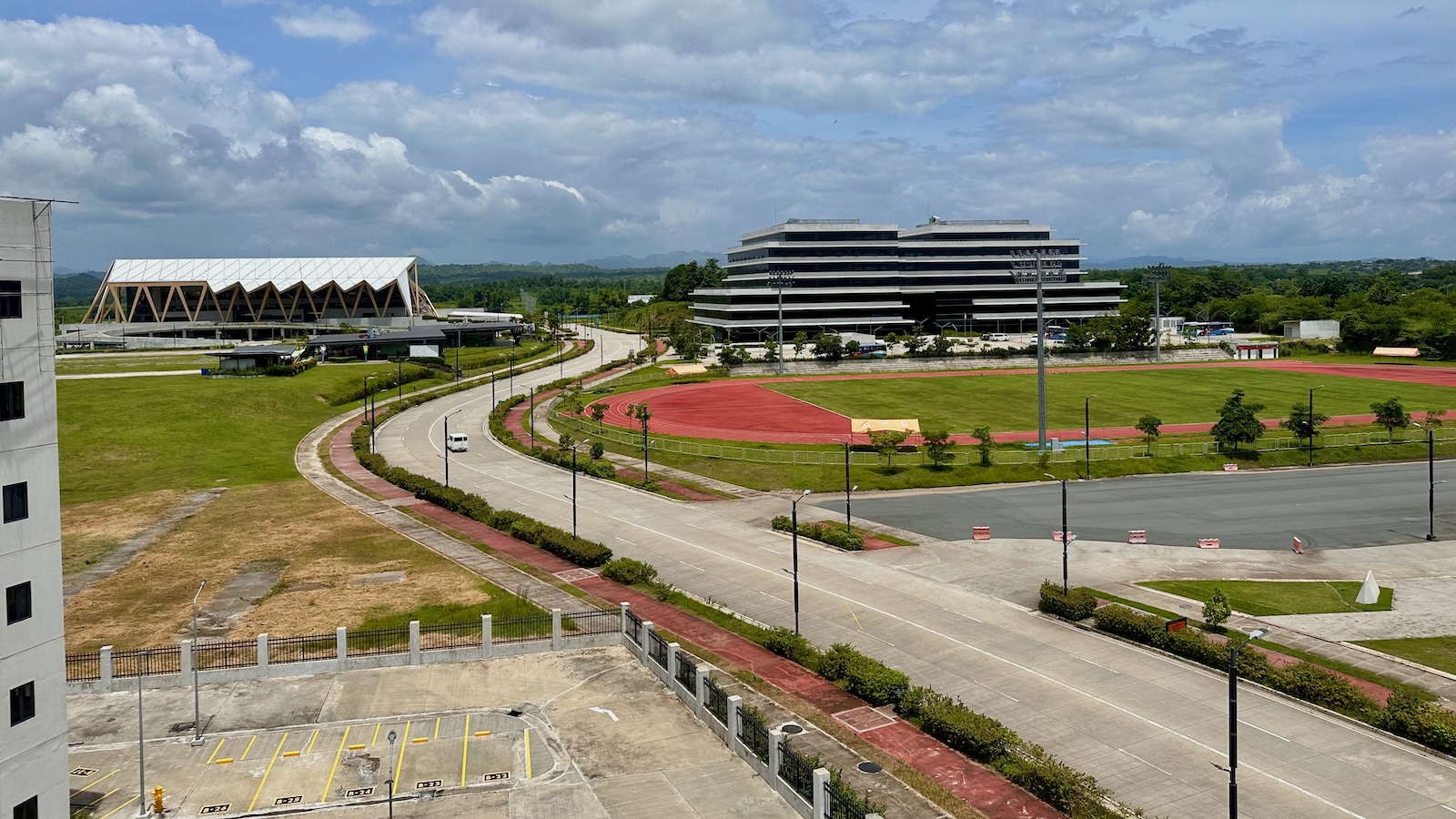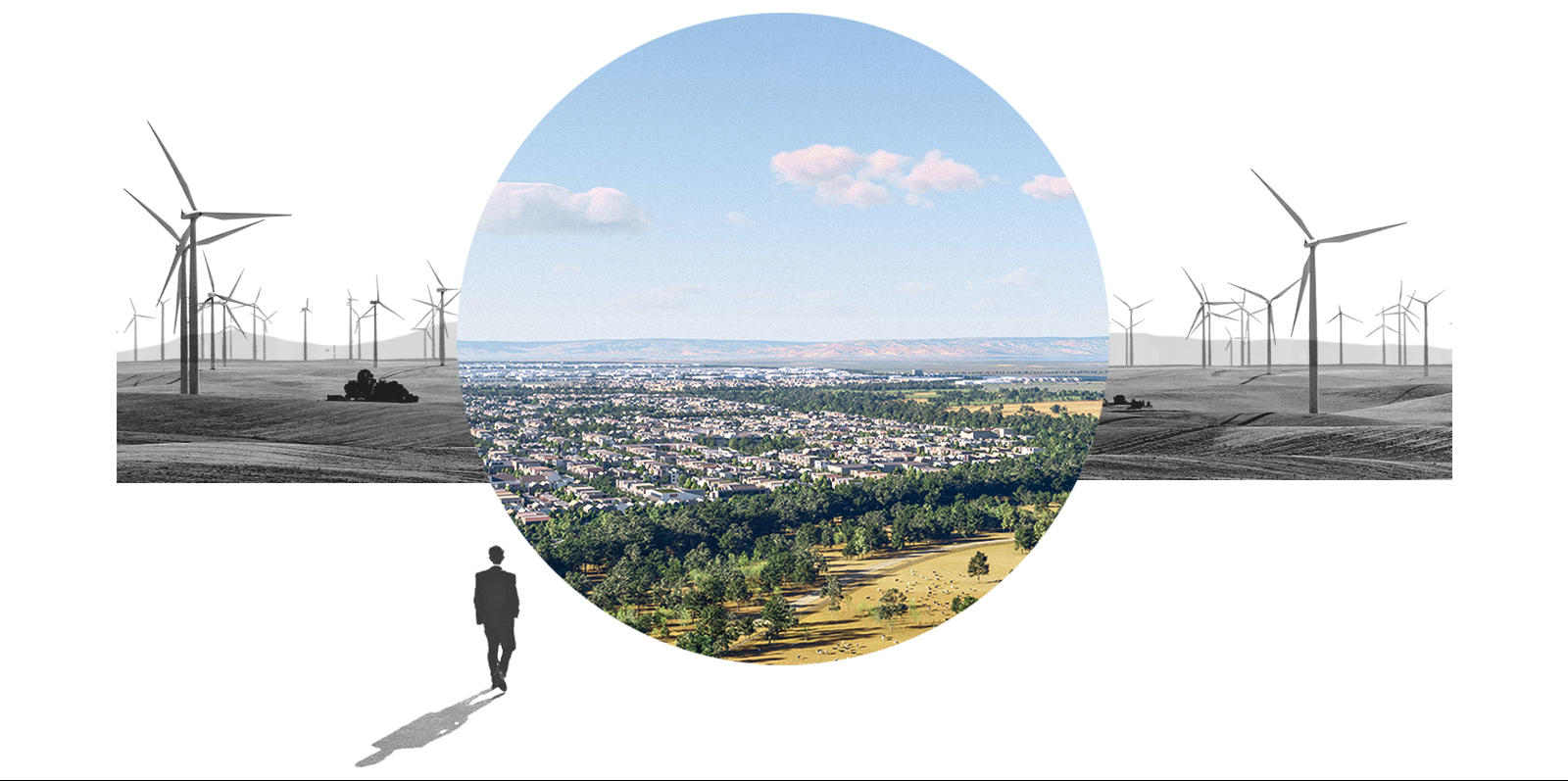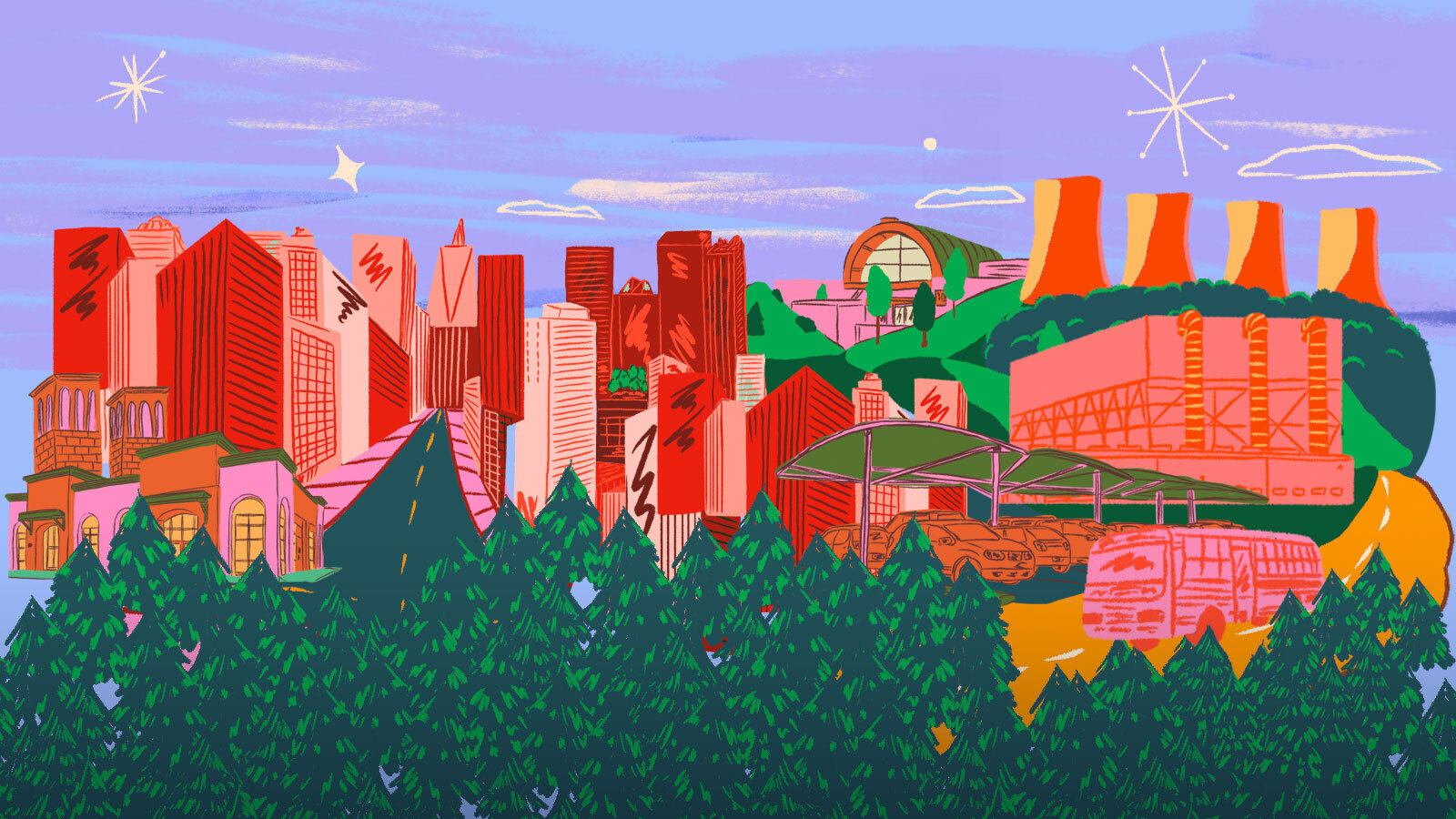The highway approaching New Clark City is wide — four lanes each way in places — but carries little traffic. Newly installed streetlamps, powered by sunlight, dot the median. Construction equipment and recently finished buildings rise ahead, where the Philippine government is building a metropolis designed to withstand the threats of a hotter, less predictable world.
Once completed in 2065, this climate-resilient city, which has already attracted nearly $2.5 billion in investment, could teem with 1.2 million people and serve as a backup capital should Manila, about 70 miles to the south, be incapacitated by disaster.
Metropolitan Manila, the world’s most densely populated urban area, lies on a floodplain vulnerable to rising seas and violent typhoons. New Clark City, on the other hand, sits between two mountain ranges, land chosen for its ability to withstand extreme weather. The plan includes commercial and residential neighborhoods, public transit, and ample green space. Although most official functions will remain in Manila, some government agencies will move north.
“New Clark City is the first smart, green, resilient metropolis in the Philippines,” said Lucky Niño Baula of the Bases Conversion and Development Authority, or BCDA, the government entity leading the project. Joshua Bingcang, the agency’s president and CEO, has an expansive vision of the city’s role: It will, he hopes, “help with nation-building and create space for economic development.”
New Clark City is one of many urban experiments being planned in response to climate change. But unlike, say, the floating community in South Korea called Oceanix or Saudi Arabia’s wall-like “linear city,” which as designed would be 105 miles long and just one-eighth of a mile wide, New Clark City is based on a technologically viable plan. Yet the Philippine project has challenges of its own, and some of its biggest promises may not fully materialize. There are questions about its ability to withstand a climate catastrophe, for example, and about how many people will want, or be able, to move there. Other major infrastructure projects elsewhere in the country cast doubt on the government’s stated commitment to resilient and inclusive development.
But what troubles some critics most is New Clark City seems to prioritize the desires of a few over the needs of many. It stands on land taken without consent or compensation from the Indigenous Ayta people, and a dearth of affordable housing risks creating a haven for elites rather than a place where all can enjoy the benefits of the country’s growing economy.
Metropolitan Manila, which covers an area smaller than New York City, is home to 14.5 million people. Cars, trucks, motorcycles, and a hodgepodge of public transit crowd narrow streets, and it can take hours to drive even a mile or two. The city — an average of 43 feet above sea level — floods regularly, and there is precious little green space.
New Clark City is meant to alleviate those challenges. It sits on a site about half the size of Washington, D.C. that was once part of Clark Air Base, an American military site created in 1903, when the Philippines was a U.S. colony. Arnel Casanova, a businessperson and urban planner who led the Bases Conversion and Development Authority, or BCDA, under former president Noynoy Aquino, conceived of the project in 2012. The devastation wrought by Typhoon Ketsana in 2009 (and, later, Typhoon Haiyan in 2013) convinced him of the need to build cities on higher ground.
Jam Sta Rosa / AFP via Getty Images
Casanova hoped a planned metropolis would provide abundant green space, prevent congestion by incorporating mass transit from the start, and avoid Manila’s economic segregation, something he is keenly aware of. When he arrived there as a student, Casanova could not afford an apartment and lived in one of the city’s many informal settlements — unregulated neighborhoods, often built in hazardous areas, that lack basic services like running water. New Clark City, he said, recognizes “how important it is for human beings to have their physical space designed and developed in such a way that human dignity and community can be promoted and upheld.”
The project has enjoyed strong support from three presidents. Aquino is from the region, which helped explain his enthusiasm for it. His successor, President Rodrigo Duterte, made New Clark City a flagship of his administration. Although the city has been less important to President Bongbong Marcos, in part because of other priorities (including an affordable housing project critics call unrealistic), he remains committed and has expressed hope that it will become “a mecca for tourists, a magnet of investments, and a market of goods and services.”
Casanova envisioned New Clark City in broad strokes, with the details to emerge over time. Construction will unfold in five phases over 40 years, but the government has not made its master plan or budget public. Private investors are expected to foot most of the bill, with more than 100 U.S. companies reportedly among those interested in backing the effort.
Construction started in 2016. Beginning in April 2018, crews labored around the clock for 18 months to complete a stadium, an aquatic center, and other structures for the 2019 Southeast Asian Games. They have since erected the National Government Administrative Center — designed to house 3,000 government employees — and a 516-unit apartment complex. Yet apart from 229 students attending the National Academy of Sports, no one has moved in permanently. Of the 80-odd apartments sold thus far, most have gone to high-level officials and business executives who use them as vacation homes, according to the building’s manager.
Construction is entering its second phase, with plans for expanded residential, commercial, and industrial development; government offices; and a golf course. Several schools, including the University of the Philippines, are building campuses as well.

Maggie Wang / Grist
For now, the city remains relatively quiet. Roads are mostly empty, and few people live there, although BCDA employees, construction workers, and others involved in its planning and creation are a regular presence. Driving down freshly paved streets or strolling through a park along the Cutcut River, it is possible to imagine the place bustling with activity within the next decade or so.
Its location — inland, flanked by mountains, and more than 170 feet above sea level at its lowest point — bolsters the development authority’s argument that the site provides ample protection against the worst impacts of climate change. Seen from the Administrative Center, currently the tallest building, the distant peaks suggest a measure of invulnerability.
New Clark City sits in Central Luzon, a low-lying area of plains and paddies sometimes known as “the rice granary of the Philippines.” The region is laced by rivers and ringed by mountains, including Mount Pinatubo. Because it is flat, the area between Manila and New Clark City occasionally floods. In 1972, Typhoon Rita — known among Filipinos as Typhoon Gloring — caused more than a week of inundation and destroyed the homes of around 2 million people. Gerry Bagtasa, an atmospheric physicist at the University of the Philippines Diliman, said similar occurrences are possible in an era of increasingly violent storms and rising seas. Bases Conversion and Development Authority officials insist New Clark City is immune to flooding: “No, it won’t happen,” they say, citing the ample drainage, green space, and “no-build” zones they’re confident can manage rainfall. Such claims have merit, but the city faces other dangers. Mount Pinatubo erupted with catastrophic results in 1991, and a major fault line runs through the area.
Climate change will not significantly increase the likelihood of eruptions or earthquakes. But Harold Aquino, a civil engineer and disaster resilience researcher at Massey University of New Zealand, said such risks “have to be on our radar.” He, Bagtasa, and others who study the hazards wrought by a warming world find it unrealistic to think any location in a country already experiencing the impacts of climate change will be immune to its threats. Moreover, Aquino points out that New Clark City will shape the local environment: “When you start building a new community, you alter the topography of the area, and therefore you also alter the way water flows.”
New Clark City also may not be as green as promised. Just 30 percent of its energy is slated to come from renewable sources. That speaks to the Philippines’ overwhelming reliance on fossil fuels, which account for around 75 percent of its electricity generation. The country is attempting to expand its clean energy capacity, but officials at the Philippine Department of Energy said it could be decades before New Clark City can rely upon renewables for most of its power. A recent proposal to build a 91.4-acre solar farm there failed to garner even a single bid.
The government’s vision for New Clark City, which includes wide sidewalks, ample bike lanes, and bus lines, improves on Metro Manila’s much-maligned transportation infrastructure. But the city will still rely heavily on automobiles. And even as the government calls New Clark City a model of climate-forward thinking, it is pursuing projects in Manila that undermine efforts to foster climate resilience. They include the Pasig River Expressway, a six-lane elevated highway that critics argue will increase congestion, adversely impact the river for which it is named and contribute to the urban heat island effect; and New Manila International Airport, which is being built on land reclaimed from Manila Bay.
Development authority officials believe concerns about New Clark City’s sustainability are either overblown or can be overcome through technological innovation. Casanova believes most of the development has remained faithful to his vision of a sustainable and resilient city. “There’s just one thing that I feel is being violated,” he said. “They’ve begun to accept golf courses. I’m a golfer. But to me, a golf course is really destructive environmentally.”
Such an amenity is indicative of a larger problem, said Sheilah Napalang, a professor of urban planning at the University of the Philippines Diliman: A lack of affordable housing could make New Clark City a haven for the affluent. “For it to be truly sustainable,” she said, “you have to have housing opportunities with a range of prices.”
Napalang, a former assistant secretary of transportation under President Duterte, said the Bases Conversion and Development Authority has a lackluster record on affordable housing. Prices in its other flagship project, a district in Metro Manila called Bonifacio Global City, are five to 10 times higher than elsewhere in the city. Most of the district’s residents are corporate executives, and workers endure long commutes to get there.
Lucky Niño Baula of the BCDA said the development authority recognizes the need for affordable housing, and the agency has announced plans to build 2,000 to 3,000 units for “low- to middle-income” workers. Still, it has not offered any details on how much housing will be widely affordable in a country where the average annual household income is about $6,000.
Moreover, New Clark City is being built on the ancestral land of the Indigenous Ayta people, thousands of whom may be displaced by the construction. Although the government is legally required to include Indigenous peoples in any discussions about development on their land — a process called free, prior, and informed consent — critics like Carlo Manalansan say this never happened with New Clark City.
Manalansan, a community organizer at the International Accountability Project, has worked with the Ayta to raise awareness about violations of their rights. He described the situation bluntly: “They are corrupt,” he said of the National Commission on Indigenous Peoples, or NCIP, the government agency responsible for safeguarding Indigenous rights.
Representatives of the Ayta community could not be reached, but Filipino journalists have reported that hundreds of families were evicted during the first phase of construction and as many as 65,000 people, including 18,000 Ayta, in 12 villages could be pushed out as New Clark City is built. Roland Calde, the NCIP official in charge of Indigenous affairs in the area, said he was unfamiliar with the project despite its pursuit by three presidential administrations. Another NCIP official, Rhodex Valenciano, attributed the displacements to construction of a nearby dam, said the displaced are not Indigenous, and blamed the Ayta for claiming too much land in their title application, which, if successful, would allow them to prevent encroachment by any infrastructure projects. “They are a population of around 500, and now they are applying for [title to] half of the municipality of Capas,” Valenciano said. “Imagine that! It’s an abuse of the rights of the IPs [Indigenous peoples].”
Joshua Bingcang, the president and CEO of the Bases Conversion and Development Authority, says the agency has provided $738 million to those affected by construction. “We had trouble with our Commission on Audit before,” he says, referring to the government’s independent oversight agency. “We had to defend why we are giving so much financial assistance to them.”
Critics like Manalansan largely agree that the government needs to invest in climate resilience, and that must include reimagining Philippine cities. But they argue that the government’s current path will not lead to a more resilient future because it risks leaving people behind. Rather than upholding the rights of Indigenous peoples, they say, BCDA has marginalized them. Instead of establishing job opportunities and services that would attract those of all socioeconomic classes, it has emphasized policies that threaten to exclude all but the affluent. One analysis called this approach internal colonialism and warns that it will “result in negative consequences for local and Indigenous communities.”
Some critics view the endeavor as a continuation of former President Ferdinand Marcos’ penchant for white elephants — large projects, like the Bataan Nuclear Power Plant built in the 1980s but never used — whose cost far exceeds their usefulness. But there is still time to address these problems. Aquino, the Massey University professor, suggests that the government come up with a concrete plan for managing and mitigating the city’s impacts on the Ayta population and give them a role in its planning.
“Resilience is not just infrastructural or physical resilience, but also social resilience and trying to protect Ayta culture,” he said. What’s more, the government “could benefit from their first-hand experience of how climate has impacted the area. We can leverage Indigenous and local knowledge when it comes to climate-proofing the area.”
In addition to respecting the Ayta’s status as primary stakeholders in the land, making New Clark City a model of sustainability and equity will require building more affordable housing and providing economic opportunities for Filipinos of all backgrounds. The government also needs to aggressively build out renewable energy, develop robust public transportation, and ensure green spaces are accessible to all. In Aquino’s words, “We have to think about who we’re making the city or the community resilient for.”
Source link
Maggie Wang grist.org



